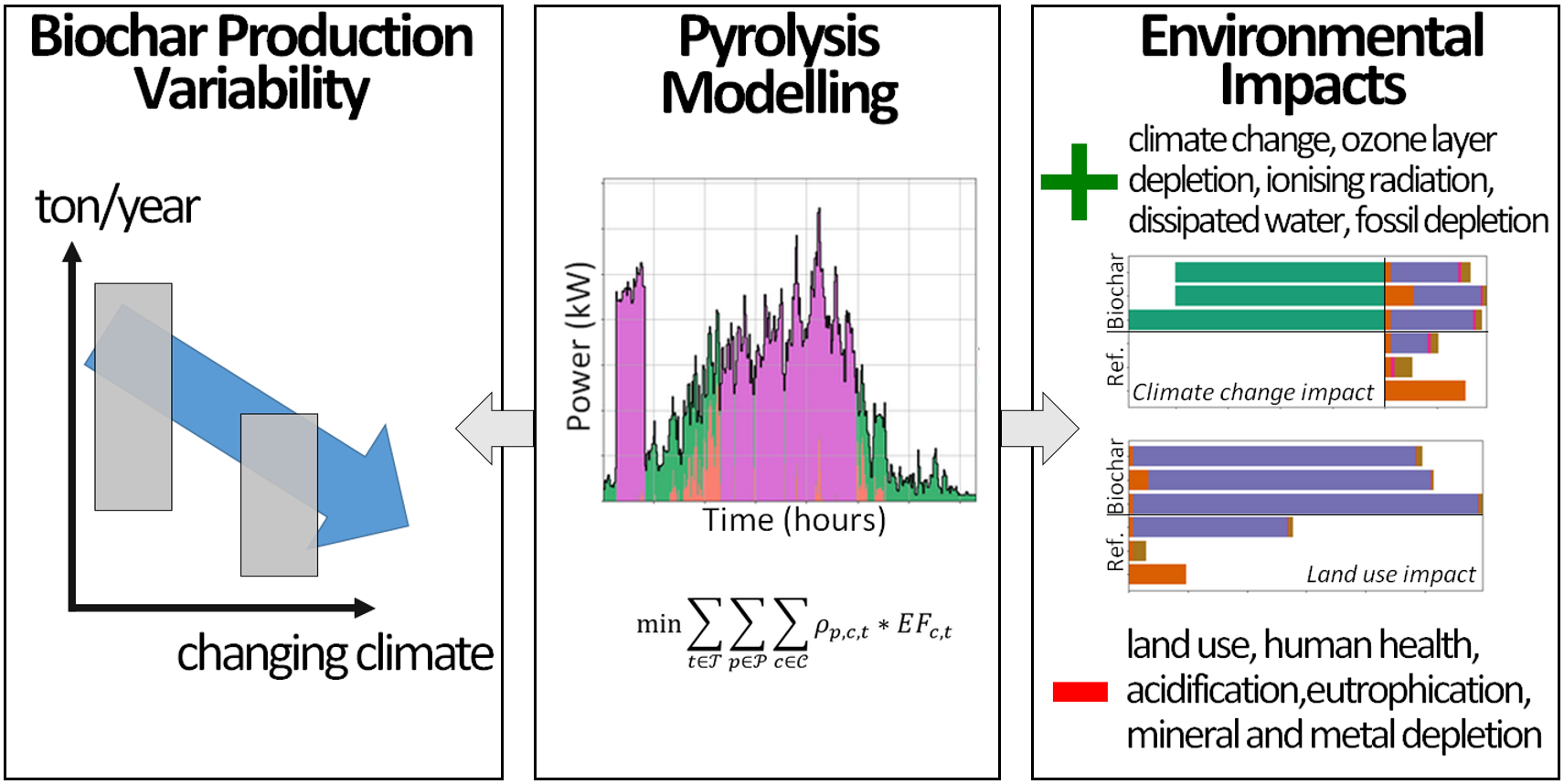
Research highlights
- Open-source verktyg kombinerades för att analysera det nya pyrolys-värmesystemet på gården.
- Värmesystem från pyrolys på gårdar kan uppnå negativa nettoklimatutsläpp med hjälp av biokol.
- För att maximera produktionen av biokol är det av stor vikt att dimensionera pyrolys-värmesystemet på ett passande sätt.
- Lagring av kol via biokolet hade i sig en miljöpåverkan, genom ökad användning av biomassa.
- Hållbar tillförsel av biomassa och effektiv användning av biokol är kritiska faktorer.
Resurser
Referens
Azzi ES, Karltun E, Sundberg C (2021) Small-scale biochar production on Swedish farms: A model for estimating potential, variability, and environmental performance. Journal of Cleaner Production 280:124873. DOI: 10.1016/j.jclepro.2020.124873
Presentationer
Studien har presenterats vid en konferens och ett flertal workshops. Slides från presentationerna kan laddas ned nedan:
Modell
I studien modellerades systemet i Python, där brightway2 och ficus användes. Filerna finns tillgängliga på GitHub via P2_farm_biochar.
Inspelningar
Titta på en presentation av artikeln.
Vill du läsa mer?
Abstract
Several small-scale pyrolysis plants have been installed on Swedish farms and uptake is increasing in the Nordic countries. Pyrolysis plants convert biomass to biochar for agricultural applications and syngas for heating applications. These projects are driven by ambitions of achieving carbon dioxide removal, reducing environmental impacts, and improving farm finances and resilience.
Before policy support for on-farm pyrolysis projects is implemented, a comprehensive environmental evaluation of these systems is needed. Here, a model was developed to jointly: (i) simulate operation of on-farm energy systems equipped with pyrolysis units; (ii) estimate biochar production potential and its variability under different energy demand situations and designs; and (iii) calculate life cycle environmental impacts. The model was applied to a case study farm in Sweden.
The farm’s heating system achieved net carbon dioxide removal through biochar carbon sequestration, but increased its impact in several other environmental categories, mainly due to increased biomass throughput. Proper dimensioning of heatconstrained systems is key to ensure optimal biochar production, as biochar production potential of the case farm was reduced under expected climate change in Sweden.
To improve the environmental footprint of future biochar systems, it is crucial that expected co-benefits from biochar use in agriculture are realised. The model developed here is available for application to other cases.
Frequently asked questions [under construction]
A compilation of comments and questions arising from disucssing this article. Don’t hesitate to contact us if you have questions.